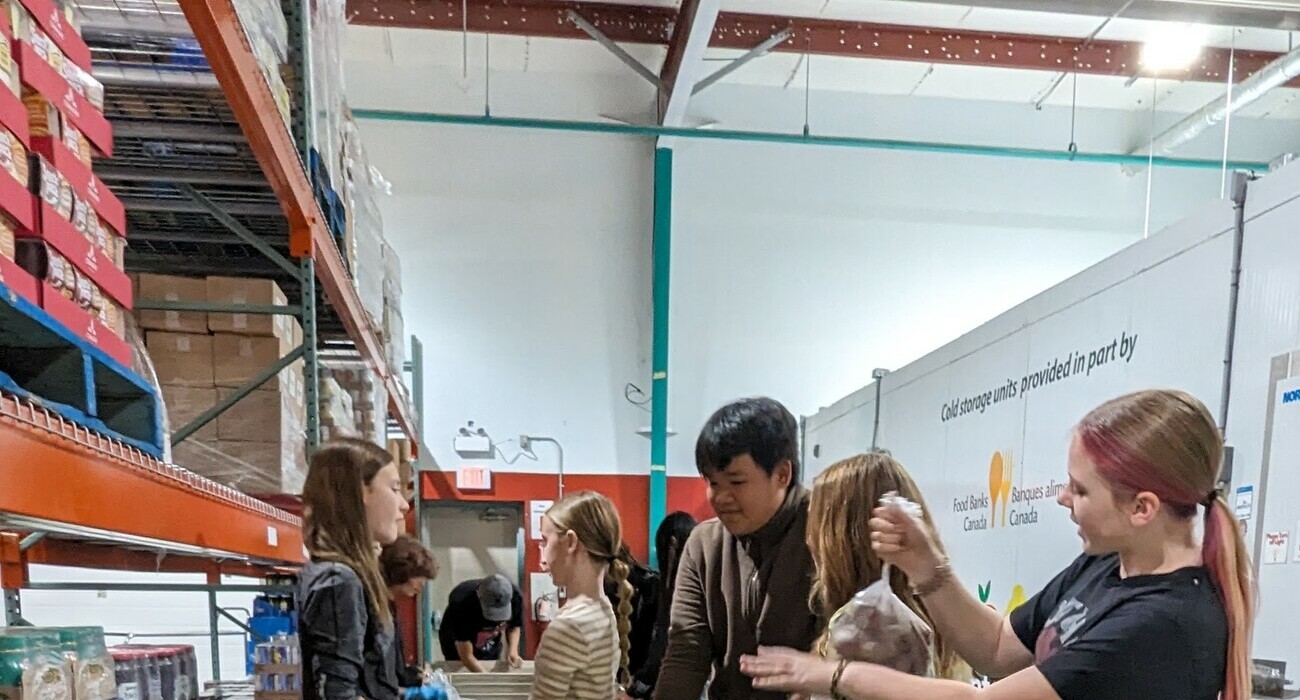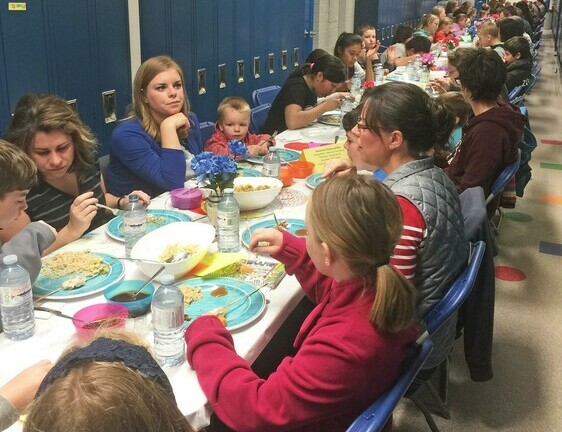
Nutrition programs across Palliser Regional Schools are not only meeting an immediate, physical need, they’re also providing some food for thought.
Eight Palliser schools have received provincial funding under the school nutrition program. While the delivery methods vary from school-to-school, there is a prevailing goal.
“It is obviously important to make sure children are fed,” says Jason Kupery, Director of Learning. “But it’s also about raising the awareness of the importance of good, quality food; what to pack in lunches; and the ‘eat most often,’ ‘eat less often’ categories.”
Healthy students are better learners, agrees Stephanie Wierl of Alberta Health Services. As a Health Promotion Facilitator, she provides schools in Palliser with resources, tools and success stories from schools around the province to strengthen their approaches to building healthy school communities.
“The connections to nutrition that classroom teachers can make as far as curriculum can make a lot of impact; embedding nutrition education into health or phys-ed classes to ensure students are getting these important messages more than once a day,” she says.
It’s also important to make a connection with the larger school community, and that includes students having conversations at home with family members about the importance of healthy eating.
The recently-revised ‘Canada’s Food Guide’ emphasizes the importance of eating meals with others. Eating with others, it states, provides quality time spent together; shares food traditions across generations and cultures; and allows those involved to explore new healthy foods they might not otherwise try.
Palliser encouraged those schools receiving funding to host a community event in March as part of ‘Nutrition Month.’
Barons School hosted an evening where students and parents joined in the preparation of a taco soup and salad bar meal with fruit salad for dessert. Before sitting down to eat, they talked about making healthy choices like substituting ground turkey for ground beef, and provided ideas for bag lunches for students. Each family was sent home with leftovers and recipes were made available for those interested.
In keeping with the community theme, the kindergarten to Grade 6 school offers a healthy breakfast for students each day, with students eating together on blankets scattered across the gym floor.
“Our blankets have been a comfortable, fun, casual way to encourage students to visit and enjoy together a healthy meal to start their day,” says Principal Fred Jack, adding he’s impressed by the students who welcome those from others grades to join them so everyone feels included.
Mackenzie Kohlman, an educational assistant who co-ordinates the school’s breakfast program, says eating together can makes the students more adventurous.
“Some kids won’t take anything, but then see a friend trying something and they will give it a try too,” she says.
Kohlman tries to offer a varied breakfast menu, including cereal and fruit. She also likes to make at least one “fancy-ish” meal each week – like an egg bake – and introduces students to food they might not be familiar with.
“Today I thought it was definitely going to be a miss, but it was a hit,” says Kohlman of her fruit smoothies.
The modelling of healthy lifestyles is important, and that can also mean students sharing the messages learned at school with their parents.
“Students – children and youth – have got a lot of power to be that change agent,” says Wierl. “If the message is coming home with them and they’re going, ‘hey mom and dad, I want to have broccoli for supper.’ We hope parents will say ‘Well, OK, if we can make that happen, let’s go for it.’”
Barons School also offers a daily snack – like homemade trail mix, veggies and dip, or crackers and cheese – with students delivering a bowl to each classroom.
Wierl believes a strength is the diversity of food choices and programs offered within Palliser when it comes to the nutrition program.
“Some have been offering a breakfast cart program, some are supplementing snacks and some are full-on, full-meal deals,” she says, with each school tailoring its program to meet the specific needs of its school community.
Barons School went the breakfast route because some of their students face a lengthy bus ride to school each day and don’t always have time for a healthy meal at home to start their day, says Pat Moltzahn, administrative assistant.
Barons School, Milo Community School and Arrowwood Community School started receiving provincial funding for nutrition programs last year. They were joined this year by Jennie Emery Elementary School in Coaldale, Coalhurst Elementary School, Dorothy Dalgliesh School in Picture Butte, Noble Central School in Nobleford and Huntsville School in Iron Springs.
There are other schools in Palliser which offer some sort of meal or snacks, but they rely on various community partners rather than provincial funding.
The future of provincial funding for nutrition programs is uncertain at this point. As a result, Kupery says participating schools were encouraged to make sure necessities like dishes, blenders and fridges were purchased first to ensure they can feed students for less in the future.
Jack is confident the nutrition program is making a difference.
“One hundred per cent of our teaching and administration staff, when evaluating our nutrition program, have stated our daily breakfast has provided students with heightened alertness, greater engagement, and less of a lethargic start to the day,” he says.
A school survey of Grade 3-6 students last year showed 85 per cent of respondents look forward to breakfast at school and feel it is helping them with their school work. Jack says they have also heard similar comments from parents.
Kupery is among the leadership team working on a wellness framework for Palliser Regional Schools. While the focus is providing support around mental health initiatives, it will also include physical health and nutritional initiatives.





